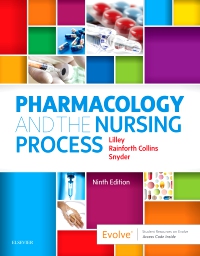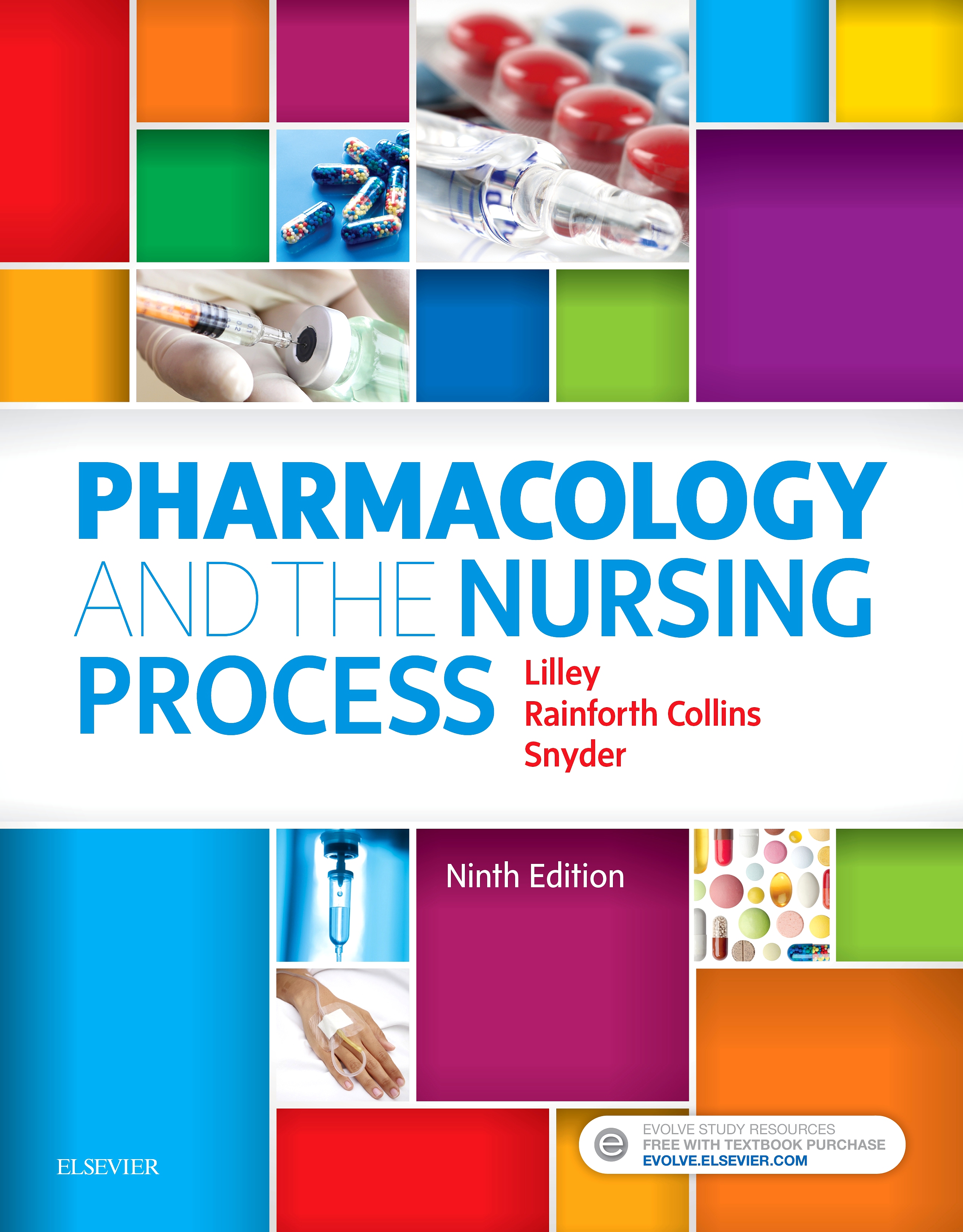
Pharmacology and the Nursing Process Elsevier eBook on VitalSource, 9th Edition
Elsevier eBook on VitalSource

Give your students the perfect blend of pharmacology, prioritization, and nursing process information. As one of the best-selling nursing pharmacology books on the market, Pharmacology and the Nursing Process focuses on the key information today’s nursing students need to safely and effectively administer medications. The 9th Edition features clearly written updated drug content reflecting the latest FDA drug approvals, withdrawals, and therapeutic uses. Hundreds of full-color illustrations detail how drugs work in the body and depict key steps in administration. As in previous editions, the text includes thoughtful learning strategies, simple language, a wealth of student-friendly features and innovative learning aids, and QSEN callouts — helping you more easily tie competencies directly to content. Along with its integrated NCLEX® preparation and instructor resources, you won’t find a more complete pharmacology text for your course!
Newer Edition Available
Pharmacology and the Nursing Process - Elsevier eBook on VitalSource
-
- NEW! Thoroughly updated drug content reflects the very latest FDA drug approvals, withdrawals, and therapeutic uses, as well as corresponding updated nursing content
- UNIQUE! Many new images in Photo Atlas of Drug Administration included to accompany difficult concepts.
- NEW! Inclusion of more student practice questions helps students better comprehend complex concepts.
- Focus on need-to-know content uses a "key drug" approach to help students focus on the most important information.
- Focus on the nursing process helps students learn to prioritize nursing care to focus on the most essential assessments, nursing diagnoses, interventions, and evaluation/outcome criteria.
- Focus on prioritization includes prioritized nursing diagnoses along with corresponding prioritization of goals and outcomes, helping students learn to connect nursing diagnoses to goals and outcomes.
- Additional QSEN coverage incorporates more QSEN information throughout the text.
- Applicable QSEN competencies added to text case study titles
- Collaboration and teamwork content added to selected case studies
- Addition of new Safety: What Went Wrong? case studies
- Explanation of QSEN initiatives as it relates to safety and quality of patient care is included in the Medication Errors chapter
- An extensive Photo Atlas of Drug Administration features more than 100 step-by-step illustrations depicting key steps in drug administration for various routes of drug administration.
- UNIQUE! QSEN focus highlights those aspects of the book — such as boxes, tips, case studies, and other content — that correlate with the QSEN competencies. QSEN competencies are also reemphasized throughout the TEACH for Nurses lesson plans and PowerPoint slides.
- Popular key drug approach focuses on the need-to-know content for safe clinical practice and uses a streamlined approach to drug indications, emphasizing only the most common or serious adverse effects.
- Integrated NCLEX® Examination preparation includes seven NCLEX Examination review questions in every chapter, with at least one alternate-format item per chapter.
- Thorough application of the nursing process is addressed in each chapter to help students learn how to prioritize nursing care to focus on the most essential assessments, interventions, and evaluation/outcome criteria.
- Colorful and consistent learner-friendly format utilizes a variety of tables and practical body systems organization to help students integrate pharmacology content with what they are learning in medical-surgical and adult health nursing courses.
- Large collection of student-friendly learning aids includes approachable text elements such as:
- Drug profiles highlighting specific information on commonly-used agents.
- Case studies that help bring patients to life and promote critical thinking skills.
- Dosages tables providing instant access to dosages, routes, and indications for individual drugs.
- Key points summarizing key pharmacology and nursing content in each chapter.
- Critical thinking and prioritization questions encourage students to think on a deeper level.
- More than 250 full-color photos and illustrations show how drugs work in the body and how to administer medications safely and effectively.
-
- NEW! Thoroughly updated drug content reflects the very latest FDA drug approvals, withdrawals, and therapeutic uses, as well as corresponding updated nursing content
- NEW! UNIQUE! Many new images in Photo Atlas of Drug Information included to accompany difficult concepts.
- NEW! Inclusion of more student practice questions helps you better comprehend complex concepts.
-
PART 1: PHARMACOLOGY BASICS
1. The Nursing Process and Drug Therapy
2. Pharmacologic Principles
3. Lifespan Considerations
4. Cultural, Legal, and Ethical Considerations
5. Medication Errors: Preventing and Responding
6. Patient Education and Drug Therapy
7. Over-the-Counter Drugs and Herbal and Dietary Supplements
8. Gene Therapy and Pharmacogenomics
9. Photo Atlas of Drug AdministrationPART 2: DRUGS AFFECTING THE CENTRAL NERVOUS SYSTEM
10. Analgesic Drugs
11. General and Local Anesthetics
12. Central Nervous System Depressants and Muscle Relaxants
13. Central Nervous System Stimulants and Related Drugs
14. Antiepileptic Drugs
15. Antiparkinson Drugs
16. Psychotherapeutic Drugs
17. Substance Use DisorderPART 3: DRUGS AFFECTING THE AUTONOMIC NERVOUS SYSTEM
18. Adrenergic Drugs
19. Adrenergic-Blocking Drugs
20. Cholinergic Drugs
21. Cholinergic-Blocking DrugsPART 4: DRUGS AFFECTING THE CARDIOVASCULAR AND RENAL SYSTEMS
22. Antihypertensive Drugs
23. Antianginal Drugs
24. Heart Failure Drugs
25. Antidysrhythmic Drugs
26. Coagulation Modifier Drugs
27. Antilipemic Drugs
28. Diuretic Drugs
29. Fluids and ElectrolytesPART 5: DRUGS AFFECTING THE ENDOCRINE AND REPRODUCTIVE SYSTEMS
30. Pituitary Drugs
31. Thyroid and Antithyroid Drugs
32. Antidiabetic Drugs
33. Adrenal Drugs
34. Women’s Health Drugs
35. Men’s Health DrugsPART 6: DRUGS AFFECTING THE RESPIRATORY SYSTEM
36. Antihistamines, Decongestants, Antitussives, and Expectorants
37. Respiratory DrugsPART 7: ANTIINFECTIVE AND ANTIINFLAMMATORY DRUGS
38. Antibiotics Part 1
39. Antibiotics Part 2
40. Antiviral Drugs
41. Antitubercular Drugs
42. Antifungal Drugs
43. Antimalarial, Antiprotozoal, and Anthelmintic Drugs
44. Antiinflammatory and Antigout DrugsPART 8: CHEMOTHERAPEUTIC DRUGS AND BIOLOGIC AND IMMUNE MODIFIERS
45. Antineoplastic Drugs Part 1: Cancer Overview and Cell Cycle–Specific Drugs
46. Antineoplastic Drugs Part 2: Cell Cycle–Nonspecific Drugs and Miscellaneous Drugs
47. Biologic Response–Modifying and Antirheumatic Drugs
48. Immunosuppressant Drugs
49. Immunizing DrugsPART 9: DRUGS AFFECTING THE GASTROINTESTINAL SYSTEM AND NUTRITION
50. Acid-Controlling Drugs
51. Bowel Disorder Drugs
52. Antiemetic and Antinausea Drugs
53. Vitamins and Minerals
54. Anemia Drugs
55. Nutritional SupplementsPART 10: DERMATOLOGIC, OPHTHALMIC, AND OTIC DRUGS
56. Dermatologic Drugs
57. Ophthalmic Drugs
58. Otic DrugsAppendix: Pharmaceutical Abbreviations
Index




 as described in our
as described in our 